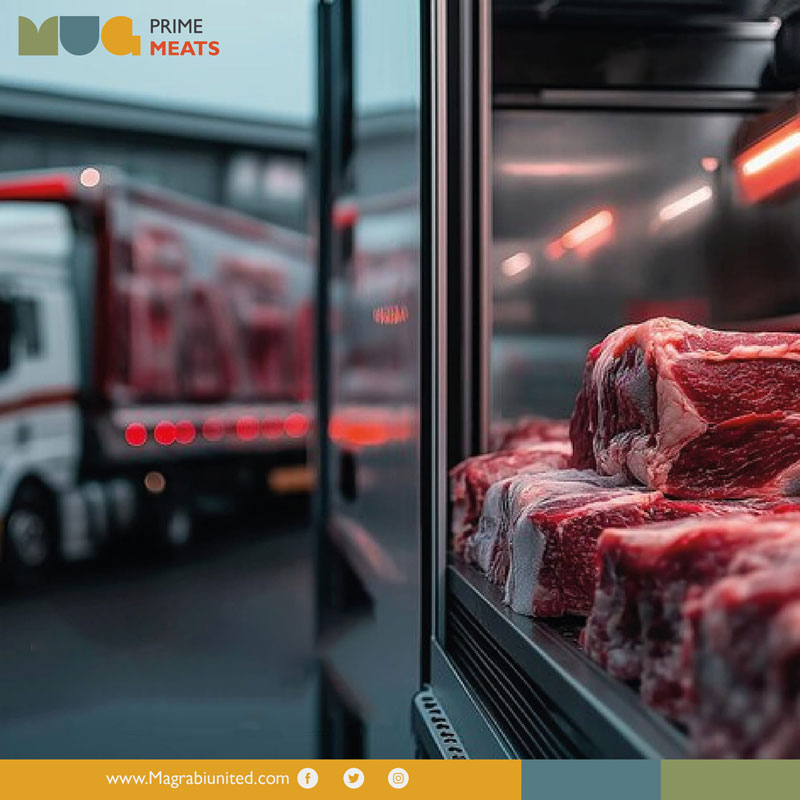Kenyan pastoralists often receive less than their livestock’s worth when selling in local markets, but new digital initiatives are helping them achieve fairer prices. Pastoralists are a key source of livestock, which has brought fame to many restaurants in Kenya. However, the added value isn’t equally distributed.
For instance, a local roadside restaurant in Nairobi, where the scent of grilled meat fills the air as commuters head home, serves the popular Kenyan dish known as Nyama Choma. At “Njuguna’s Palace,” a restaurant in the affluent Westlands neighborhood, this dish is sold for around $12 per kilogram, attracting employees and residents alike.
Approximately 70% of all meat consumed in Kenya comes from 15 of its 47 counties, located in the northern and northeastern arid and semi-arid regions. Unlike the industrial meat sector in countries like South Africa, most livestock in Kenya, particularly cattle, is supplied by pastoralists who sell them in local markets. While meat fetches a higher price in the capital, especially in value-added forms like Nyama Choma, it can sell as a raw product for less than $4 per kilogram in the counties. Poverty levels in regions where livestock is the primary source of income are about 30% higher than in the rest of the country, and pastoralists often receive less than what their livestock is worth when sold in local markets.
Digitizing Markets to Secure Better Prices
To negotiate better prices, the Kenya Livestock Marketing Council (KLMC), in collaboration with the Netherlands-based Technical Centre for Agricultural and Rural Cooperation (CTA) and its partners, is experimenting with the digitization of two livestock markets in Kenya.
Previously, animals in the Merille livestock market in Marsabit County were visually assessed to estimate their weight, leading to bartering negotiations between traders and pastoralists. Now, livestock is weighed on electronic scales, and this data is recorded along with origin, ownership, and post-sale destination.
Frankline Agolla, co-founder of Kenyan tech firm Amfratech, which supports CTA in providing technological solutions for pastoralists, explains, “This is essentially to give pastoralists informed data for negotiation.” The data is crucial for regulating livestock sales in an area prone to cattle rustling and land disputes, as climate change forces pastoralists to travel greater distances in search of pasture. It also opens up possibilities for financial and technological products in an under-served sector.
Amfratech has developed a mobile app called myAnga, which provides weather and feed condition advice to pastoralists whose livelihoods are increasingly threatened by drought. In another data project, the CTA is working with Takaful Insurance of Africa, based in Nairobi, to offer affordable weather-based insurance for livestock. The product, insuring around 20,000 pastoralists, compensates them before any climate-related disaster occurs whenever feed levels drop below a certain point.
Supply Chain Issues and Export Readiness
According to recent data, about $1.2 million passed through the Merille livestock market last year in a profitable but underdeveloped sector. Abdullah Ali, a trader who travels around Kenya’s northern counties as part of a group buying and selling up to 40 cattle each week, notes that while purchasing a cow at the Merille livestock market for around $400, he can sell it for $430 in Isiolo, just 160 km away, and for $460 more than twice that distance in Nairobi. However, his expenses include renting a truck to transport the cattle and paying hefty fees for police escorts in an area notorious for roadside banditry. Any dent in his margin at the point of purchase can hurt his trade’s viability. To address these issues, KLMC is in talks with slaughterhouses and traders to agree on a uniform and fair price for all when purchasing from pastoralists.
KLMC’s CEO says, “The livestock sector is currently a free market. It’s an agreement between the buyer and the seller, but we need to introduce some standards. We need to improve livestock prices for pastoralists.” By using weight to sell livestock at a set price, pastoralists will be somewhat compensated, and protected from significant price fluctuations during the dry season between December and January. KLMC is also lobbying the government to legislate these changes.
Kenya’s livestock sector also suffers from underdevelopment and a lack of advanced commercial institutions, which prevents it from realizing its potential as a meat exporter. Despite basic breeding conditions and proximity to Middle Eastern markets hungry for imports, Kenya lags behind neighboring Sudan, Somalia, Djibouti, and Ethiopia as a major regional exporter. However, progress is being made. The Export Processing Zone Authority is constructing an $18 million quarantine facility in Tana River County, where livestock will undergo clinical and physical examinations before being exported to the Arabian Peninsula and the Middle East. The center will also be used to fatten and improve the quality of animals, which can then be sold at a better price. Kenya is expected to gain $94 million in foreign exchange earnings after three years and $469 million after 10 years.
In conclusion, improving the livestock industry at both the origin and export points will position Kenya well to fully capitalize on this profitable sector




